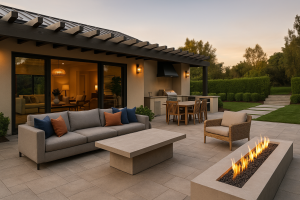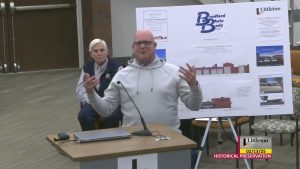Welcome to our comprehensive guide on how to design petrol filling stations. Whether you’re planning to build a new station or renovate an existing one, having a well-designed station is crucial for attracting and retaining customers. Designing a petrol station requires careful consideration of various aspects such as layout, architecture, and construction.
In this guide, we’ll take you through the entire process of designing a petrol station step by step. We’ll cover everything from service station planning and fuel dispensing station design to convenience store design and branding and marketing strategies.
We’ll also address important considerations such as fuel type, safety regulations, and sustainability in petrol station design. Additionally, we’ll discuss the importance of maintenance and upkeep as well as incorporating new technologies and trends into the petrol station design.
With our expert tips and guidelines, you’ll be able to design a petrol filling station that not only meets the needs of your customers but also stands out in the market. So let’s get started on how to design petrol filling stations that are functional, attractive, and profitable.
Service Station Planning
Before embarking on designing a petrol station, it is crucial to have a solid plan in place. Proper planning ensures that the station will be functional, efficient, and compliant with local regulations. Here are some important considerations when planning a petrol station:
Location
The location of a petrol station is a critical factor in its success. It should be situated in a high-traffic area, with easy access for customers. Additionally, it is important to analyze the competition in the area and choose a location that offers a competitive advantage.
Zoning Regulations
Each locality has its own zoning regulations regarding petrol stations. It is important to research and understand these regulations before starting the design process. This includes restrictions on the size and height of the station, setbacks from the road, and other site-specific regulations.
Site Analysis
A thorough analysis of the site is necessary to ensure that the petrol station is designed to take advantage of the site’s unique features. This includes examining the topography, drainage, and soil conditions of the site.
Concept Plan
A concept plan is a preliminary plan that outlines the layout of the petrol station. It should include the layout of the fuel pumps, convenience store, and other facilities. The concept plan should be created with the customer in mind and should be organized to be easy to navigate.
Compliance with Regulations
It is important to ensure that the petrol station complies with all relevant regulations, including environmental regulations, safety regulations, and fire codes. Compliance with regulations ensures that the station is safe for customers and workers and avoids unnecessary fines or legal issues.
Fuel Dispensing Station Design
Designing the fuel dispensing station is a crucial part of designing a petrol station. The position and layout of the petrol pumps play a significant role in determining the flow and efficiency of the station.
When planning the fuel dispensing station, it’s important to consider factors such as fuel type, safety regulations, and customer convenience. The petrol pumps should be designed to allow easy access for customers and to facilitate a smooth flow of traffic through the station.
The positioning of the petrol pumps should also be carefully considered. They should be strategically located to allow for easy access from multiple angles, while also ensuring that there is ample space for cars to maneuver around the station.
Another important aspect of the fuel dispensing station design is the canopy structure that covers the petrol pumps. The canopy must be designed to provide adequate protection from the elements, as well as to complement the overall aesthetic of the petrol station.
| Design Considerations: | Details: |
|---|---|
| Fuel Type | The fuel pumps should be designed to accommodate the specific type of fuel being dispensed, such as diesel or gasoline. |
| Safety Regulations | The design of the petrol pumps and the canopy structure should comply with all relevant safety regulations to ensure the safety of customers and employees. |
| Convenience | The position of the petrol pumps should be designed to allow for easy access and to promote a smooth flow of traffic through the station. This can be achieved through careful consideration of the station’s layout and traffic patterns. |
| Canopy Design | The design of the canopy structure should provide adequate protection from the elements while also complementing the overall aesthetic of the petrol station. This can be achieved through careful selection of materials, lighting, and branding. |
Overall, the design of the fuel dispensing station is a critical component of petrol station design. It must be carefully planned to ensure that it is both efficient and safe for customers and employees.
Convenience Store Design
When designing a petrol station, the convenience store is a crucial component that can greatly impact customer experience. By creating a well-designed and functional store, customers are more likely to make additional purchases and return in the future. Here are some expert tips on convenience store design:
Layout
The layout of the convenience store should be designed with customer flow in mind. It should be easy for customers to navigate and find what they need. The entrance and checkout area should be clearly marked and visible from the fuel pumps. Place high-demand items, such as snacks and drinks, near the checkout area to encourage additional purchases.
Product Placement
Strategic product placement can increase sales and improve customer experience. Place items that are frequently purchased together, such as coffee and breakfast sandwiches, in close proximity. Use signage and displays to draw attention to new or seasonal products. Additionally, consider offering a variety of products that cater to different dietary needs or preferences.
Signage
Clear and concise signage is important for guiding customers and promoting sales. Use large, easy-to-read signs to label product categories and pricing. Use digital displays to advertise promotions or loyalty programs. Additionally, consider using branded signage and logos to create a cohesive and recognizable aesthetic.
Gas Station Canopy Design
The canopy structure over the fuel pumps is an essential component of any petrol filling station. It not only protects customers from the elements but also serves as a branding and marketing opportunity for the station.
Materials
When designing the canopy, it is important to consider the material used. Common materials include steel, aluminum, and polycarbonate. Steel is durable and long-lasting but may require more maintenance. Aluminum is lightweight and easy to work with but may not be as strong as steel. Polycarbonate is a popular choice for its transparency and ability to let in natural light.
Lighting
Effective lighting is crucial for safety and convenience. Consider using energy-efficient LED lighting to illuminate the canopy structure and fuel pumps. Lighting can also be used for branding and marketing purposes by incorporating the station’s logo and colors into the design.
Branding
The canopy is a prime location for branding and marketing. Incorporate the station’s logo and colors into the design to create a strong brand identity. Consider using signage and graphics to promote special deals and offers.
Functionality
The canopy should be designed with functionality in mind. Consider the layout of the fuel pumps and the flow of traffic through the station. The canopy should also be designed to accommodate large vehicles such as trucks and RVs. Safety regulations should also be taken into account when designing the canopy structure.
Maintenance
Regular maintenance is necessary to keep the canopy in good condition. Cleaning the structure and replacing any damaged or worn parts will help to ensure the longevity of the canopy. It is also important to regularly inspect the canopy for any safety concerns.
Filling Station Architecture
Designing a petrol station requires more than just a functional layout and construction plan. The architecture of the station plays an important role in creating an attractive and memorable design that draws in customers. In this section, we’ll explore the different architectural elements that go into a petrol station and how to create a design that is both functional and aesthetically pleasing.
The Roof
The roof of a petrol station serves both functional and aesthetic purposes. It protects the fuel pumps and customers from the elements while also contributing to the overall visual appeal of the station. When designing the roof, consider the type of material (such as metal or shingles), the pitch, and any additional features such as skylights or solar panels.
The Façade
The façade of a petrol station is the face of the station, and it’s important to create a design that is eye-catching and memorable. Consider incorporating unique features such as a curved entrance or bold signage to make your station stand out. Additionally, the façade should be designed to complement the surrounding environment and reflect the overall branding of the station.
Landscaping
Landscaping is an often-overlooked aspect of petrol station design, but it can make a big impact on the overall customer experience. Adding plants, trees, and other greenery can create a more welcoming and relaxing environment for customers. Additionally, consider incorporating seating areas or other outdoor amenities to encourage customers to stay and enjoy the surroundings.
Sustainability
Sustainability is becoming an increasingly important aspect of petrol station design. Consider incorporating eco-friendly features such as rainwater collection systems, solar panels, and energy-efficient lighting. These features not only reduce the environmental impact of the station but can also save money on energy costs in the long run.
Overall Design
When designing the architecture of a petrol station, it’s important to consider the overall aesthetic and branding of the station. The design should be consistent with the station’s logo, color scheme, and other branding elements. Additionally, the design should create a cohesive and appealing overall look that draws in customers and creates a memorable experience.
Fuel Station Construction
Constructing a petrol filling station requires careful planning, engineering, and construction management. Before beginning construction, it is important to obtain all necessary permits and approvals from local authorities and regulatory bodies. This includes zoning permits, environmental permits, and building permits.
During the construction process, it is important to prioritize safety and quality control. This includes ensuring that all equipment and materials meet industry standards and safety regulations. It is also important to have a system in place for regular inspections and maintenance of the station to ensure continued safety and functionality.
| Key Considerations for Fuel Station Construction | |
|---|---|
| Permitting | Obtaining all necessary permits and approvals from local authorities and regulatory bodies |
| Engineering | Designing the station to meet industry standards and safety regulations |
| Construction Management | Overseeing the construction process and ensuring safety and quality control |
| Inspection and Maintenance | Regular inspections and maintenance to ensure continued safety and functionality |
Branding and Marketing Strategies
In today’s highly competitive market, branding and marketing strategies play a critical role in the success of a petrol station. A strong brand identity and effective marketing campaigns can attract new customers and retain existing ones. Here are some expert tips for creating an effective branding and marketing strategy:
Create a Strong Brand Identity
A strong brand identity is critical in establishing a loyal customer base. This includes designing a distinctive logo, choosing a unique color scheme, and developing a memorable brand name. Consistency in branding across all aspects of the petrol station, including the canopy, convenience store, and fuel pumps, is also important in establishing a recognizable and trustworthy brand.
Offer Promotions and Loyalty Programs
Offering promotions and loyalty programs to customers is a great way to attract new customers and retain existing ones. This can include discounts on fuel or convenience store items, as well as loyalty programs that reward customers for frequent visits or purchases.
Utilize Social Media and Other Advertising Channels
Social media and other advertising channels, such as billboards and radio ads, are great ways to reach a wider audience and promote the petrol station. Creating engaging content on social media platforms, such as Facebook and Instagram, can also help establish a strong online presence and build a loyal following.
Partner with Local Businesses and Organizations
Partnering with local businesses and organizations, such as car dealerships or sports teams, can help increase brand awareness and attract new customers. These partnerships can include sponsorships, joint promotions, or even hosting events at the petrol station.
Stay Up-to-Date with Industry Trends
Staying up-to-date with industry trends and incorporating new technologies and services into the petrol station can help attract new customers and retain existing ones. This can include offering electric vehicle charging stations, implementing mobile payment options, or even offering car wash and detailing services.
Section 9: Maintenance and Upkeep
Maintaining and updating your petrol station is essential to keep your business running smoothly and attracting customers. Regular upkeep tasks should be performed to ensure the safety and cleanliness of your station. Here are some important factors to consider:
Cleaning and Inspection
Regular cleaning of the petrol station is necessary to ensure a safe and attractive environment for customers. This includes cleaning the fuel pumps, canopy, convenience store, and restrooms. In addition, regular inspections should be performed to identify any safety hazards or maintenance needs.
Upgrades and Renovations
Your petrol station may need upgrades or renovations over time to keep up with changing customer needs and trends. This could include updating your convenience store offerings, installing new fuel pump technology, or redesigning your canopy structure. It’s important to invest in these updates to remain competitive in the market.
New Technologies and Trends
Keeping up with new technologies and trends in the petrol station industry can help attract and retain customers. For example, offering electric vehicle charging stations or mobile payment options can set your station apart from others in the area. Keeping up with these innovations can help your petrol station stay relevant and in-demand.
Safety and Quality Control
Ensuring the safety and quality of your petrol station is crucial for maintaining customer trust and loyalty. This includes following all safety regulations, training employees on proper procedures, and maintaining high quality fuel and convenience store offerings. Regular quality control checks should also be performed to identify and address any issues.
Professional Assistance
If you’re unsure about how to properly maintain or upgrade your petrol station, it’s always a good idea to seek professional assistance. Hiring a maintenance or construction team can help ensure that your station stays in top condition and is well-equipped to meet customer needs.
FAQ
Here are some frequently asked questions related to designing petrol filling stations:
What are the zoning regulations for petrol stations?
The zoning regulations for petrol stations can vary depending on the location and local government laws and policies. It is important to research and consult with local authorities to determine the specific zoning requirements for your station.
How do I choose the best location for my station?
Choosing the best location for your station involves careful analysis of factors such as traffic patterns, nearby businesses and residential areas, and accessibility to major roads and highways. Conducting a thorough site analysis can help determine the ideal location for your station.
What fuel types should I offer at my station?
The fuel types you should offer at your station can depend on factors such as the local market demand, the types of vehicles in the area, and any environmental regulations. It is important to research and consult with fuel suppliers to determine the best fuel options for your station.
How can I create an appealing convenience store layout?
Creating an appealing convenience store layout involves careful consideration of factors such as product placement, signage, and overall aesthetics. It is important to design a layout that is both visually appealing and easy for customers to navigate.
What are some eco-friendly options for petrol station design?
Eco-friendly options for petrol station design can include the use of solar panels, LED lighting, and low-flow water fixtures. It is important to research and consult with experts in sustainable design to determine the best options for your station.









